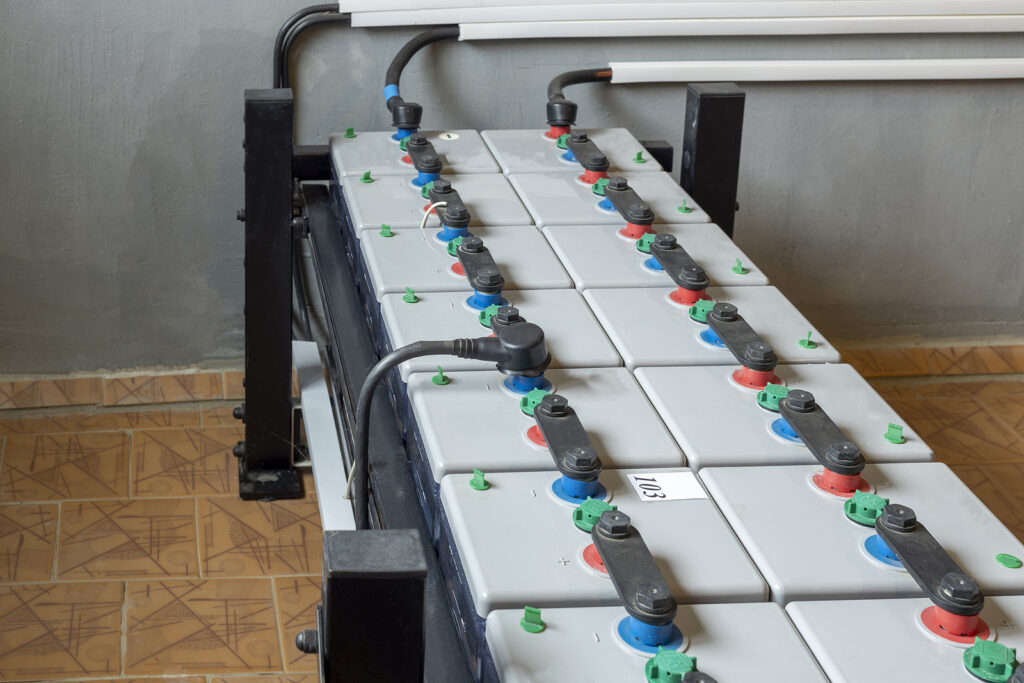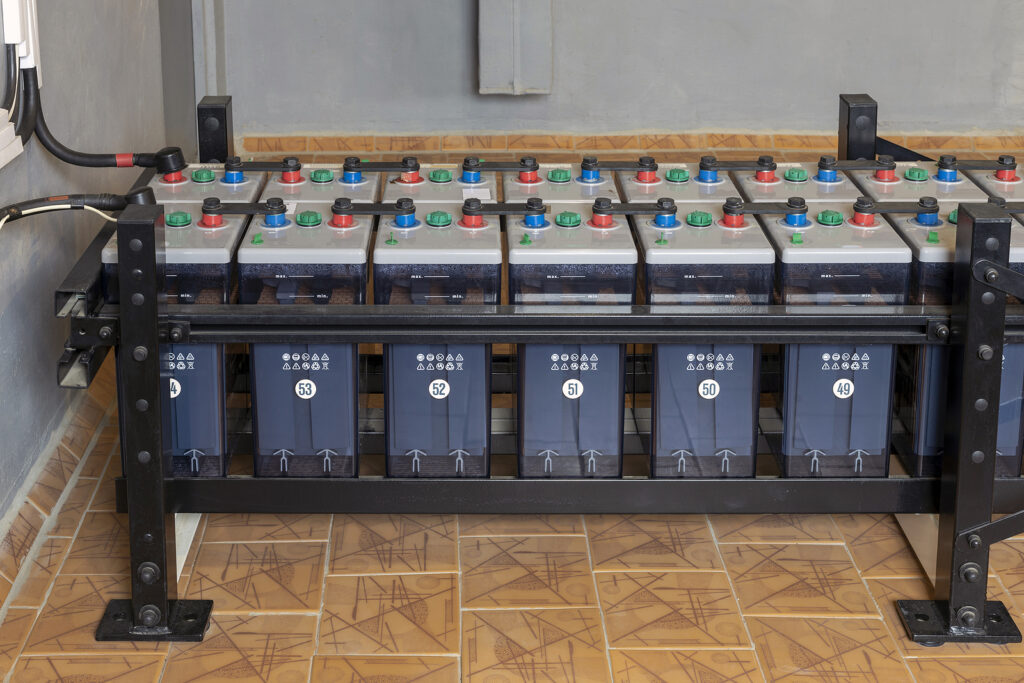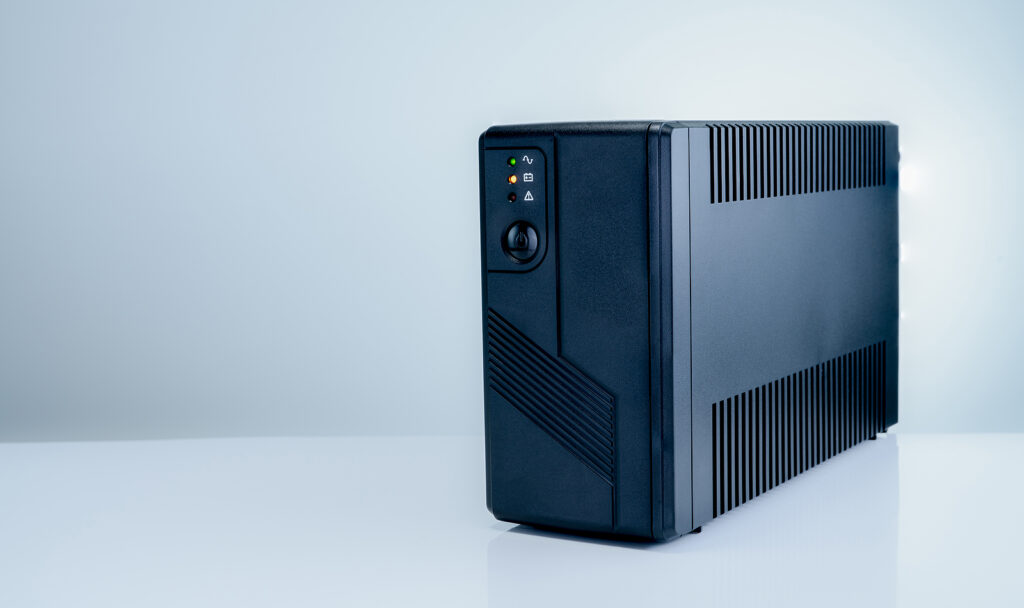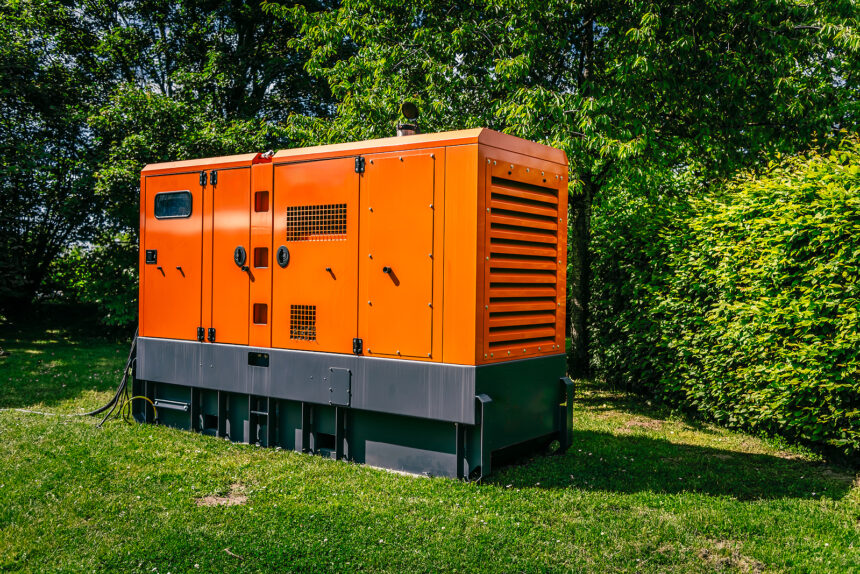The Future of Uninterruptible Power Supply
As we navigate our technology-driven lives, the significance of uninterrupted power supply (UPS) has never been more evident. From securing the operational rhythm of data centers to shielding our cherished electronics at home, UPS systems have become our safety net against sudden power glitches and voltage fluctuations. Looking forward, the future of UPS unfolds with promising trends and state-of-the-art innovations that guarantee heightened efficiency and adaptability.
One particularly captivating facet is the integration of UPS systems into critical elements like traffic lights, surveillance cameras, and communication networks. This integration marks a pivotal step towards unyielding resilience – envision traffic lights maintaining flawless order, surveillance cameras remaining steadfast sentinels, and communication networks staying wirelessly connected, all unfazed by power hiccups. This guide unravels the intricacies and potential of these integrated UPS systems, illuminating a future where uninterrupted power fuels the seamless functioning of our interconnected world.
Understanding Uninterruptible Power Supply (UPS)
Before delving into the future of UPS, it's essential to understand its fundamental purpose and functionality. Uninterruptible Power Supply is an electrical apparatus that provides backup power when the primary power source fails or experiences disruptions. UPS systems typically use batteries or flywheels to store energy, which is then released to power connected devices and equipment during power outages or fluctuations. UPS acts as a critical intermediary between the power grid and electronic devices, ensuring a continuous and stable power supply.

The Importance of UPS in Today's World
In our increasingly digital and connected world, the importance of UPS systems cannot be overstated. Here are some key reasons why UPS is essential:
Preventing Data Loss and Downtime
For businesses, data centers, and critical infrastructure, power outages can result in significant financial losses, data corruption, and downtime. UPS systems act as a safeguard, providing seamless power backup to prevent disruptions, protect valuable data, and ensure uninterrupted operations. By instantly switching to battery power during an outage, UPS systems allow for a smooth transition and provide sufficient time for backup generators to come online if needed.
Protecting Sensitive Electronics
Voltage fluctuations, power surges, and blackouts can damage sensitive electronic equipment, such as computers, servers, telecommunication devices, and medical equipment. UPS systems help regulate voltage levels, filter electrical noise, and provide surge protection, ensuring the longevity and reliability of connected devices. With built-in voltage regulation capabilities, UPS systems maintain a stable and clean power supply, shielding electronic equipment from potential harm caused by irregularities in the electrical grid.
Home Power Backup Solutions
Residential users can benefit from UPS systems to maintain power supply during blackouts or brownouts. This is particularly important for households with medical equipment, home offices, or valuable electronics that require continuous power. A UPS system installed at home acts as a reliable backup power source, providing temporary power during outages and giving homeowners peace of mind. It allows critical systems, such as security systems, refrigerators, or sump pumps, to remain operational until normal power is restored.
Preventing Data Corruption and System Damage
Sudden power disruptions or surges can lead to data corruption and system damage. When electronic devices are abruptly shut down without proper shutdown procedures, data stored in memory or unsaved work can be lost or corrupted. UPS systems provide sufficient backup power to allow for a graceful shutdown of devices, minimizing the risk of data loss and potential damage to the operating systems and software.
Mitigating Financial Losses
Power outages can result in significant financial losses for businesses. From e-commerce platforms to manufacturing facilities, downtime translates into missed opportunities, reduced productivity, and dissatisfied customers. By ensuring uninterrupted power supply, UPS systems help businesses maintain operations, meet customer demands, and mitigate financial losses associated with power-related disruptions.
Enhancing Equipment Longevity
Electronic equipment is designed to operate within specific voltage ranges. Fluctuations in power supply can cause stress on the components, leading to premature wear and tear. UPS systems provide stable and clean power, extending the lifespan of connected equipment by shielding them from voltage spikes, sags, and other electrical irregularities. This reduces the need for frequent repairs or replacements, resulting in cost savings for businesses and individuals alike.

Emerging Trends in UPS Technology
As technology continues to advance, several emerging trends and technologies are shaping the future of UPS. Let's explore some of these key developments:
Lithium-Ion Batteries: Power and Efficiency
Lithium-ion batteries have revolutionized various industries, and UPS is no exception. Lithium-ion UPS systems offer several advantages over traditional valve-regulated lead-acid (VRLA) batteries, including higher energy density, faster recharge times, longer lifespan, and reduced maintenance requirements. The compact size and lighter weight of lithium-ion batteries make them ideal for applications with limited space. With their enhanced power and efficiency, lithium-ion UPS systems are gaining popularity in data centers, telecommunications, and other mission-critical applications.
Modular UPS Systems: Scalability and Redundancy
Modular UPS systems are becoming increasingly prevalent, offering improved scalability and redundancy. Unlike traditional UPS systems that rely on a single unit, modular systems consist of multiple modules that can be added or removed as per the power requirements. This modular approach allows for easy scalability, ensuring that the UPS system can grow alongside the expanding needs of the infrastructure. Additionally, modular UPS systems offer built-in redundancy, with each module capable of independently providing power backup. In the event of a module failure, the remaining modules continue to provide uninterrupted power, enhancing system reliability.
Energy Storage Integration: Grid Flexibility and Sustainability
The integration of UPS systems with energy storage technologies, such as advanced batteries or supercapacitors, is a significant trend in the future of UPS. This integration offers several benefits, including improved grid flexibility, peak load management, and enhanced sustainability. UPS systems with energy storage capabilities can store excess electricity during off-peak hours or when renewable energy sources are abundant, and release it during peak demand periods. This reduces stress on the electrical grid, promotes grid stability, and maximizes the utilization of renewable energy sources.
Smart-UPS Management: Remote Monitoring and Predictive Analytics
The rise of the Internet of Things (IoT) and connectivity has paved the way for smart UPS management systems. These systems leverage advanced sensors, real-time monitoring, and predictive analytics to optimize UPS performance, improve maintenance practices, and enhance energy efficiency. Smart UPS management allows for remote monitoring of UPS status, battery health, and power consumption, enabling proactive maintenance and timely identification of potential issues. This data-driven approach minimizes downtime, reduces operational costs, and extends the lifespan of UPS systems.
DC UPS Systems: Direct Power Distribution
Direct Current (DC) UPS systems are gaining traction as an alternative to traditional AC UPS systems. DC power distribution offers improved efficiency, reduced energy losses, and simplified integration with DC-powered devices, such as servers, telecommunications equipment, and LED lighting systems. DC UPS systems eliminate the need for AC-to-DC conversions, leading to more streamlined power distribution and lower energy consumption. With the increasing adoption of DC-powered infrastructure, DC UPS systems present a promising future in terms of energy efficiency and compatibility.
Hybrid UPS Systems: Integration of Multiple Energy Sources
Hybrid UPS systems combine multiple energy sources, such as renewable energy, batteries, and traditional generators, to provide power backup. These systems offer flexibility, allowing users to tap into different energy sources based on availability, cost, and environmental considerations. Hybrid UPS solutions can integrate solar panels, wind turbines, or fuel cells, enabling the utilization of renewable energy and reducing dependency on fossil fuels. By intelligently managing energy sources, hybrid UPS systems provide reliable power backup while promoting sustainability.

Future Applications of UPS
The future of UPS holds immense potential for a wide range of applications. Here are some areas where UPS systems are expected to play a crucial role:
Data Centers and Cloud Computing
Data centers and cloud computing facilities are at the forefront of UPS usage. As the demand for data storage and processing continues to surge, UPS systems will evolve to meet the power requirements of these facilities. The future of UPS in data centers involves increased scalability, energy efficiency, and integration with renewable energy sources to ensure uninterrupted operation and reduce environmental impact.
Electric Vehicles and Charging Infrastructure
With the rapid growth of electric vehicles (EVs), the need for reliable charging infrastructure is paramount. UPS systems can serve as power backup solutions for EV charging stations, ensuring continuous operation and minimizing downtime. As the EV market expands, UPS systems will play a crucial role in supporting the reliable and efficient charging of electric vehicles.
Smart Cities and IoT Infrastructure
The development of smart cities and the proliferation of Internet of Things (IoT) devices necessitate reliable power backup solutions. UPS systems will play a vital role in supporting critical infrastructure, such as smart grid networks, street lighting, traffic management systems, and IoT sensors. The future of UPS in smart cities involves intelligent power management, seamless integration with IoT devices, and enhanced resilience against power disruptions.
Medical and Healthcare Facilities
Uninterrupted power supply is of utmost importance in medical and healthcare facilities, where power outages can have life-threatening consequences. UPS systems will continue to advance in terms of reliability, efficiency, and capacity to support critical medical equipment, life support systems, and electronic medical records. The future of UPS in healthcare includes intelligent monitoring and predictive maintenance to ensure continuous operation and patient safety.
Residential Power Backup Solutions
As homeowners increasingly rely on electronic devices and appliances, the demand for residential power backup solutions is on the rise. UPS systems tailored for residential applications will become more accessible and affordable, providing households with reliable power during blackouts and emergencies. The future of UPS in residential settings involves compact and user-friendly solutions that seamlessly integrate with smart home technologies.
Challenges and Considerations in the Future of UPS
While the future of UPS holds immense potential, several challenges and considerations need to be addressed:
Cost and Affordability
The cost of advanced UPS technologies, such as lithium-ion batteries and energy storage systems, can be a significant barrier to widespread adoption. However, as technology continues to advance and economies of scale are achieved, the cost of these technologies is expected to decrease, making them more accessible and affordable.
Environmental Impact and Sustainability
Sustainability is a growing concern in the power backup industry. UPS systems need to become more energy-efficient and environmentally friendly. The development of eco-friendly battery technologies, such as recyclable or biodegradable batteries, will be crucial. Additionally, integrating renewable energy sources and implementing energy management strategies will help minimize the environmental impact of UPS systems.
Integration and Compatibility
In a rapidly evolving technological landscape, compatibility and integration of UPS systems with existing infrastructure can pose challenges. UPS manufacturers and industry stakeholders need to ensure compatibility with various power distribution systems, devices, and renewable energy sources. Standards and interoperability frameworks will play a crucial role in enabling seamless integration and operation.
Security and Cyber Threats
As UPS systems become increasingly connected and reliant on digital technologies, cybersecurity becomes a critical concern. UPS manufacturers and users must prioritize robust security measures to protect against cyber threats that could compromise the integrity and availability of critical power systems.
UPS Maintenance and Monitoring
To ensure that UPS systems operate at their best and have a long lifespan, regular maintenance, and monitoring are crucial. This section will provide a detailed overview of UPS maintenance practices and the significance of monitoring. By implementing preventive maintenance measures, conducting common maintenance tasks, and leveraging remote monitoring capabilities, you can detect and address potential issues before they escalate. Additionally, we will explore the use of advanced technologies such as predictive analytics and condition monitoring to optimize UPS performance and minimize downtime.
Importance of Preventive Maintenance
Preventive maintenance is a proactive approach that involves scheduled inspections and servicing to identify and resolve potential issues before they cause disruptions. By following a preventive maintenance plan, you can ensure the reliability and performance of your UPS system. Key aspects of preventive maintenance include:
- Regular inspections of UPS components such as batteries, capacitors, fans, and connections to identify signs of wear, corrosion, or damage.
- Testing UPS functionality, including battery performance, voltage regulation, and load capacity, to ensure optimal operation.
- Cleaning and removing dust or debris from UPS components to prevent overheating and improve efficiency.
- Verifying UPS system settings and configurations to ensure they align with the intended load and requirements.
Common UPS Maintenance Tasks
Maintenance tasks are essential to keep UPS systems operating at their peak efficiency. Some common UPS maintenance tasks include:
- Battery maintenance: Regularly inspecting battery health, performing capacity tests, and replacing aging or faulty batteries to maintain UPS runtime.
- Cleaning and dusting: Removing dust and debris from UPS components and ventilation systems to prevent heat buildup and maintain proper airflow.
- Firmware and software updates: Keeping UPS firmware and monitoring software up to date to access the latest features, bug fixes, and security enhancements.
- Load testing: Conduct periodic load tests to verify the UPS's ability to handle the expected power demand and identify any limitations or issues.
- Documentation and record-keeping: Maintaining detailed records of maintenance activities, test results, and UPS performance to track historical data and identify trends or patterns.
Remote Monitoring for Early Detection
Remote monitoring plays a vital role in UPS maintenance and troubleshooting. With remote monitoring capabilities, you can monitor UPS performance, receive real-time alerts for critical events, and access detailed analytics from any location. This enables early detection of potential issues, allowing for timely intervention and preventive measures. Key benefits of remote monitoring include:
- Real-time status updates: Monitoring UPS parameters such as voltage, current, temperature, and battery health in real-time to detect abnormalities or deviations from normal operation.
- Proactive fault detection: Remote monitoring systems can identify warning signs, abnormal behavior, or potential failures before they impact UPS performance or cause downtime.
- Remote diagnostics: Troubleshooting UPS issues remotely, reducing the need for on-site visits and minimizing response time.
- Predictive maintenance: Utilizing data analytics and predictive algorithms to identify patterns and trends, enabling proactive maintenance scheduling and minimizing unexpected failures.
Predictive Analytics and Condition Monitoring
To optimize UPS performance and minimize downtime, predictive analytics, and condition monitoring are becoming increasingly valuable. These technologies leverage data from UPS sensors and monitoring systems to provide insights into the system's health and predict potential failures. Key aspects include:
- Anomaly detection: Analyzing data patterns and deviations to identify anomalies that may indicate impending issues or component failures.
- Predictive maintenance: Utilizing historical data, machine learning algorithms, and statistical models to predict the optimal timing for maintenance activities and component replacements.
- Condition-based monitoring: Continuously monitoring the condition of UPS components, such as capacitors, fans, and batteries, to detect signs of degradation or wear and take appropriate actions.
Advances in UPS Energy Efficiency
In the ever-evolving landscape of uninterruptible power supply (UPS) systems, energy efficiency stands out as a critical factor. As organizations and individuals strive for sustainability and cost savings, UPS manufacturers are continuously developing innovative solutions to enhance energy efficiency. This section explores the latest advances in UPS energy efficiency, highlighting key developments and their associated benefits.
High-Efficiency UPS Systems
One significant advancement in UPS energy efficiency is the development of high-efficiency UPS systems. Traditional UPS systems often experience energy losses during the conversion of AC power to DC power and vice versa. However, high-efficiency UPS systems incorporate advanced power electronics and designs to minimize these energy losses and improve overall system efficiency. These UPS systems are designed to operate at higher efficiencies, typically above 90%, ensuring that a higher percentage of the input power is effectively delivered to the load.
The benefits of high-efficiency UPS systems include:
- Reduced Operational Costs: High-efficiency UPS systems consume less energy, resulting in lower electricity bills and reduced operating expenses over time. Organizations can achieve significant cost savings, particularly in environments with high power demands, such as data centers or industrial facilities.
- Minimized Carbon Footprint: By reducing energy consumption, high-efficiency UPS systems contribute to a greener and more sustainable future. They help organizations meet their environmental goals by reducing greenhouse gas emissions associated with electricity generation.
- Compliance with Energy Efficiency Regulations: Many countries and regions have established energy efficiency regulations to promote the use of energy-efficient technologies. High-efficiency UPS systems enable organizations to comply with these regulations and demonstrate their commitment to environmental stewardship.
Advanced Power Management Techniques
Another notable advancement in UPS energy efficiency lies in the application of advanced power management techniques. These techniques optimize UPS operation, ensuring that power is delivered efficiently to critical loads while minimizing energy wastage. Some key power management techniques include:
- Load Segmentation: By dividing the electrical loads into different categories based on their criticality, power management systems can allocate power resources more effectively. Non-essential or less critical loads can be temporarily shut down during power outages or operated at reduced power to prioritize critical loads.
- Dynamic Voltage Regulation: UPS systems with dynamic voltage regulation capabilities can adjust the output voltage based on load requirements. This feature enables UPS systems to optimize energy delivery while maintaining stable voltage levels, thereby improving overall efficiency.
- Power Factor Correction: Power factor correction techniques improve UPS efficiency by optimizing the ratio of real power to apparent power. By correcting the power factor, UPS systems can reduce energy losses associated with reactive power and improve the utilization of electrical power.
Intelligent Load Shedding Capabilities
Intelligent load-shedding capabilities have emerged as an effective way to enhance UPS energy efficiency. Load shedding refers to the process of selectively shedding non-essential loads during power outages or during periods of high demand to ensure critical loads receive uninterrupted power. Traditional load-shedding approaches were typically manual or based on predefined priority lists. However, modern UPS systems leverage intelligent algorithms and real-time data analysis to dynamically shed loads based on their criticality and power availability.
The benefits of intelligent load-shedding capabilities include:
- Optimal Resource Allocation: By shedding non-critical loads, UPS systems can allocate the available power resources more efficiently to critical loads, ensuring uninterrupted power supply to mission-critical applications.
- Reduced Energy Waste: Load shedding prevents energy wastage by eliminating power supply to non-essential loads, thereby improving UPS efficiency and reducing energy consumption.
- Enhanced System Resilience: Intelligent load shedding helps UPS systems manage power demand during high-load situations, preventing overload conditions and ensuring the stability and reliability of the system.
Conclusion
The future of uninterruptible power supply is exciting and promising. Emerging trends and technologies, such as lithium-ion batteries, modular UPS systems, energy storage integration, smart UPS management, DC UPS systems, and hybrid UPS solutions, are revolutionizing the industry. These advancements offer enhanced performance, scalability, efficiency, and sustainability, enabling UPS systems to meet the evolving power needs of various applications.
As the world becomes increasingly reliant on technology, the importance of uninterrupted power supply cannot be overstated. From data centers and electric vehicles to smart cities and healthcare facilities, UPS systems will play a crucial role in ensuring continuous operation, protecting critical infrastructure, and supporting the transition to a sustainable future.
By addressing challenges such as cost, environmental impact, integration, and cybersecurity, the future of UPS holds the promise of reliable, efficient, and environmentally friendly power backup solutions. As technology continues to advance and innovation thrives, the future of uninterruptible power supply is bright.










